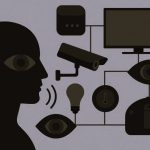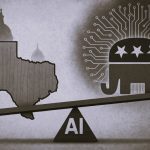

The emergence of COVID-19 disease caught the world unawares in 2019. This disease caused a pandemic that has adversely impacted society in multiple ways. Specifically, coronavirus has interfered with people’s social, economic, and political lives, while these aspects have affected education administration at all levels. Mainly, coronavirus has resulted in the closure of schools, establishment of virtual learning systems, increased educational inequalities, disadvantaging private schools, and ineffective virtual learning.
Coronavirus and The Closure of Educational Institutions
Coronavirus disease has forced school administrators to close all educational institutions globally. Notably, schools have been closed to stop the spread of the disease. However, while learners are in school, they participate in groups, and in such cases, all students may be infected when one of the students becomes sick. Consequently, the closure of schools has delayed students in acquiring education. Therefore, administrators fear that all learners might be infected if one of the students contracts the virus.
Coronavirus and The Development of Emergency Virtual Learning Systems
After schools were closed when the pandemic hit all countries globally, school administrators developed emergency remote learning systems, such as emails, videos, and institutional platforms that were new to students. Students who study better in one-on-one engagements with their instructors than using virtual learning environments were adversely affected. This change of learning modes has disadvantaged most students because the learning forms are new to them. Luckily, they could get lots of tips and useful reference at student help services. Hence, the pandemic has necessitated the introduction of virtual learning systems.
Coronavirus and Increase in Educational Inequalities
However, despite the revolution of better learning models in schools, coronavirus has increased inequalities in education. In particular, students whose parents can afford the equipment capable of facilitating digital learning during lockdown benefit more than learners in low-income families. Thus, the pandemic has disadvantaged the poor students because they cannot afford to buy or rent computers, install wireless Internet connections, and purchase the data bundles required for virtual learning.
Coronavirus and Disadvantaging of Private Educational Institutions
Teachers in private schools were more affected than those working in public schools in many countries. For example, teachers in private institutions lost their jobs massively compared to the teachers employed by the governments in public schools. Consequently, the levels of education in private schools have deteriorated compared to public schools as most of the teachers were adversely affected economically. Therefore, the pandemic has demotivated the teachers in privately owned schools, leading to poor educational outcomes in such institutions.
Coronavirus and Ineffective Virtual Learning
The lack of supervision during the learning process results in covering a few concepts. This case implies that students lack the self-drive and motivation to study by themselves without the help of their teachers. Consequently, students fail to achieve their academic goals due to ineffective and inefficient learning using online platforms. Thus, despite adopting distance learning, learners do not effectively study because there is no physical contact between them and their teachers.
In conclusion, coronavirus has led to the closure of schools. This misfortune has resulted in the need for emergency virtual learning systems. Educational inequalities have also increased because students from low-income families cannot compete equally with learners from high-income backgrounds. Private schools and colleges have also been more adversely affected than public learning institutions because individuals rather than the government solely support them. Finally, the lack of supervision during lockdown had led to ineffective learning.






